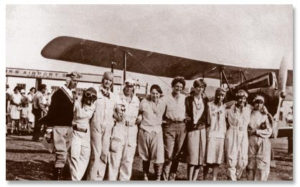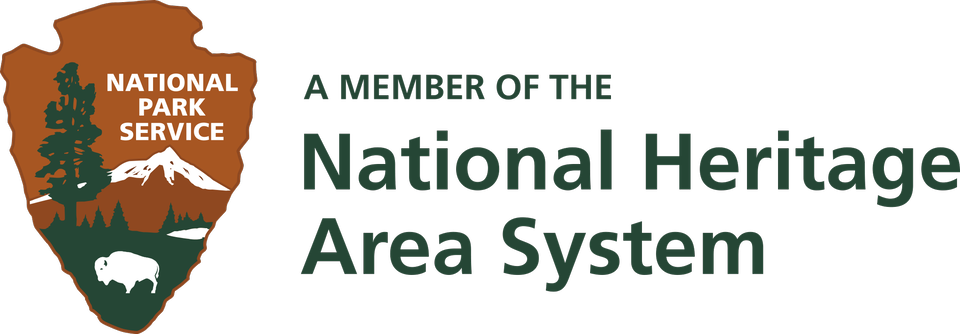1929 National Women’s Air Derby
Over nine days and 2,800 miles, the best women aviators in the nation competed in a cross-country race from Santa Monica, CA to Cleveland, OH. The race was called the National Women’s Air Derby of 1929, although male journalists gave it a different name – the Powder Puff Derby. Throughout the course, the aviators dealt with immense deserts and high mountain peaks stopping overnight in eight cities before reaching their final destination.

Line up of pilots at the National Women’s Air Derby, 1929
The 1920s ushered in a new era of liberation for women immediately following WWI. Women gained the right to vote, flappers forever changed women’s fashion, and new work opportunities were available to women. The aftermath of WWI also gave way to a new love of aviation, creating a surplus of affordable aircraft and trained pilots. Barnstormers flew incredibly low in open fields, barely skirting past barns much to the delight of early crowds.
See more Golden Age of Aviation
Women joined the craze and became wing-walkers, daredevils, and stunt flyers. Gladys Roy and Ivan Unger played a pretend game of tennis on top of their flying plane, others jumped from parachutes or hung from the wheels of the aircraft. Not all women aviators were daredevils though, some made a living as demonstrators of commercial aircraft. Showcasing how easy it was to fly, and how safe, these women proved aviation wasn’t just for performers, but for business and commerce as well.
The National Women’s Air Derby was set to end at the Cleveland Air Show. The show featured closed-course races around pylons, multiple men’s cross-country airplane races, airplane displays, blimps, aerial acrobatic shows, and an appearance by Charles Lindbergh. 300,000 people showed up for opening day. Ticket prices were $2.
“Everyone called her ‘Pancho,’ a name she got while crewing on a boat smuggling guns into Mexico during the Mexican Revolution. She was known to curse like a sailor, ride fast horses as well as fast planes, and wear men’s clothes. She smoked cigars…lighting them with kitchen matches that she struck on the seat of her pants.” (Blair, 43)
Each woman pilot was required to have a flying license, have logged 100 hours solo flying (25 hours long distance), and carry a gallon of water and enough food to last three days. Aviators included Amelia Earhart, Ruth Elder, Florence “Pancho” Barnes, Louise Thaden, Marvel Crosson, Ruth Nichols, Bobbi Trout, Edith Foltz, Phoebie Omlie, Thea Tasche, and Jessie “Chubbie” Keith-Miller.
The pistol shot that started the race on August 18, 1929, was fired in Cleveland, relayed by radio, carried over loudspeakers to the race’s starting location at Clover Field, then signaled to each woman by an official starter with the lowering of a flag. The women took off at one to two-minute intervals with squadrons of planes carrying race officials and press following.
Mechanical troubles, sabotage, curious spectators, lack of sleep, and sickness were all hazards the women had to face. Most of these women were flying in open-cockpit planes bearing the full heat and dust of late summer. Navigation tools were limited to looking for landmarks, following road maps, and flying along rail lines. The lower the pilots flew, however, the closer they were to dangerous telephone lines, buildings, and uneven terrain.
On August 26, 1929 after flying 2,800 miles in 19 hours and 35 minutes, Louise Thaden crossed the finish line in Cleveland first after flying over Cincinnati and Columbus, OH. Cheering crowds awaited the pilots and each landed with broad smiles and sincere praise of their fellow racers. That spirit carried on and on November 2, 1929 the first meeting of The Ninety-Nines, an international organization of women pilots, met at Curtiss Airfield on Long Island.
The National Women’s Air Derby of 1929 saw 14 out of 20 pilots finish the race, a higher percentage than for any of the men’s cross-country races. Today, The Ninety-Nines counts over 6,000 women pilots as members and continues to promote the advancement of aviation through education, scholarships, and mutual support.
Thanks to the following source(s) for the information provided in this article:
Blair, M. W. (2006). The roaring 20: the first cross-country air race for women. Washington, D.C.: National Geographic.


